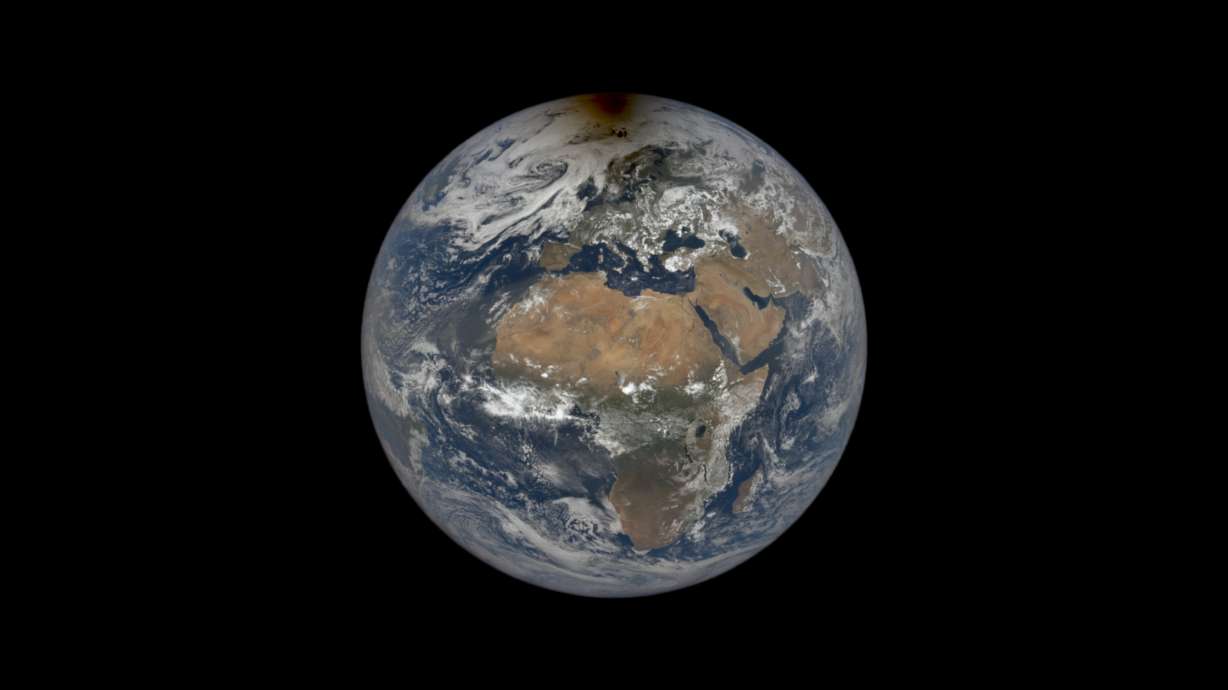Estimated read time: 4-5 minutes
This archived news story is available only for your personal, non-commercial use. Information in the story may be outdated or superseded by additional information. Reading or replaying the story in its archived form does not constitute a republication of the story.
ATLANTA — If you feel like there's less time in the day, you're correct.
Scientists recorded the shortest day on Earth since the invention of the atomic clock.
Our planet's rotation measured in at 1.59 milliseconds short of the normal 24-hour day on June 29, according to the International Earth Rotation and Reference Systems Service, an organization in charge of global timekeeping.
A rotation is the length of time the Earth takes to spin once on its axis, which is roughly 86,400 seconds.
The previous record was documented on July 19, 2020, when the day measured 1.47 milliseconds shorter than normal.
The atomic clock is a standardized unit of measurement that has been used since the 1950s to tell time and measure the Earth's rotation, said Dennis McCarthy, retired director of time at the U.S. Naval Observatory.
Despite June 29 breaking a record for the shortest day in modern history, there have been much shorter days on Earth, he said.
When dinosaurs still roamed the planet 70 million years ago, a single day on Earth lasted about 23½ hours, according to a 2020 study published in Paleoceanography and Paleoclimatology.
Since 1820, scientists documented Earth's rotation slowing down, according to NASA. In the past few years, it began speeding up, McCarthy said.
Why is the speed increasing?
Researchers do not have a definitive answer on how or why Earth is turning slightly faster, but it may be due to glacial isostatic adjustment, or the movement of land due to melting glaciers, McCarthy said.
Earth is slightly wider than it is tall, which makes it an oblate spheroid, he said. The glaciers at the poles weigh down on the Earth's crust at the North and South poles, McCarthy said.
Since the poles are melting due to the climate crisis, there is less pressure on the top and bottom of the planet, which moves the crust up and makes the Earth rounder, he said. The circular shape helps the planet spin faster, McCarthy said.
It's the same phenomenon that figure skaters use to increase and decrease their speed, he said.
When skaters stretch their arms away from their body as they spin, it takes more force for them to rotate, he said. When they tuck their arms close to their body, their speed increases because their body mass is closer to their center of gravity, McCarthy said.
As Earth becomes rounder, its mass becomes closer to its center, which increases its rotational speed, he said.
Our day-to-day existence doesn't even recognize that millisecond.
–Dennis McCarthy, retired director of time at the U.S. Naval Observatory
Some have suggested a correlation with the Chandler wobble, McCarthy said. The axis our planet rotates on is not lined up with its axis of symmetry, an invisible vertical line that divides the Earth into two equal halves.
This creates a slight wobble as the Earth rotates, similar to how a football wobbles when it is thrown, he said.
When a player tosses a football, it wobbles slightly as it rotates since it often doesn't spin around the axis of symmetry, he said.
"If you're a really good passer in football, you line up the axis of rotation with the axis of symmetry of the football, and it doesn't wobble," McCarthy said.
However, McCarthy said the Chandler wobble likely does not affect the rotational speed of Earth because the wobble is due to the planet's shape. If the planet's shape changes, it changes the frequency of the wobble, not its rotation frequency, he said.
Removing a leap second
Since researchers began measuring the Earth's rotational speed using atomic clocks, Earth had been slowing down its rotational speed, McCarthy said.
"Our day-to-day existence doesn't even recognize that millisecond," McCarthy said. "But if these things add up, then it could change the rate at which we insert a leap second."
In the instances when the milliseconds build up over time, the scientific community has added a leap second to the clock to slow down our time to match Earth's, he said. There have been 27 leap seconds added since 1972, according to EarthSky.
Because Earth is now rotating faster, a leap second would need to be taken away to catch our timekeeping up with Earth's increasing rotational speed, McCarthy said.
If the planet continues this rotational trend, the removal of a leap second likely wouldn't need to happen for another three to four years, he said.








